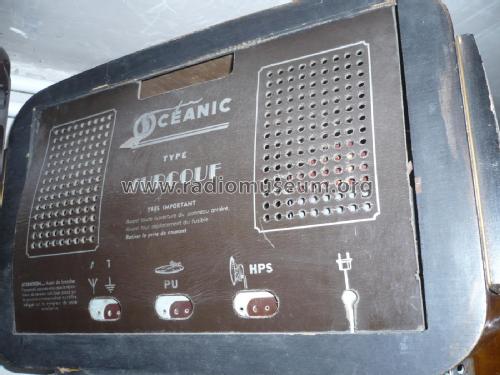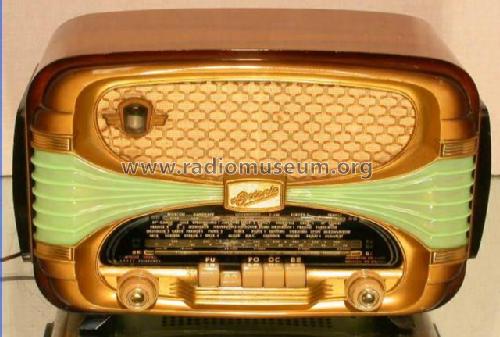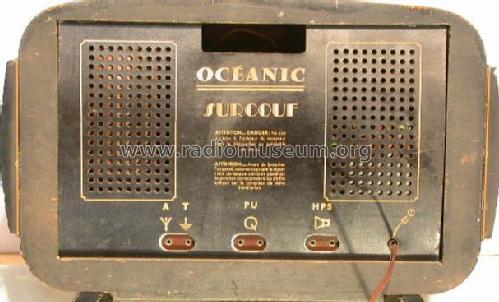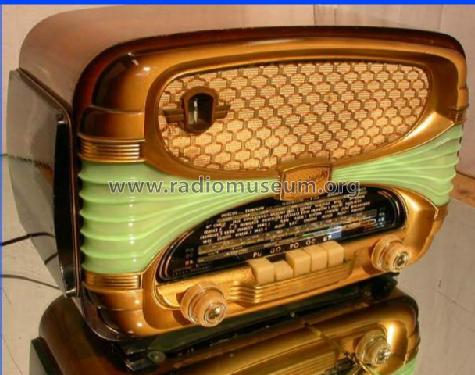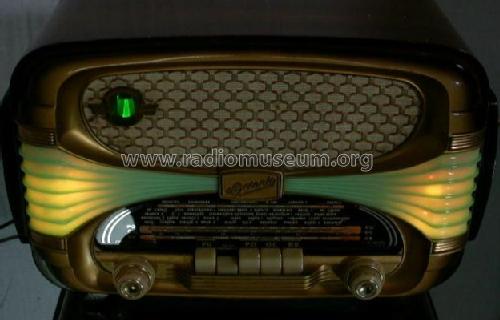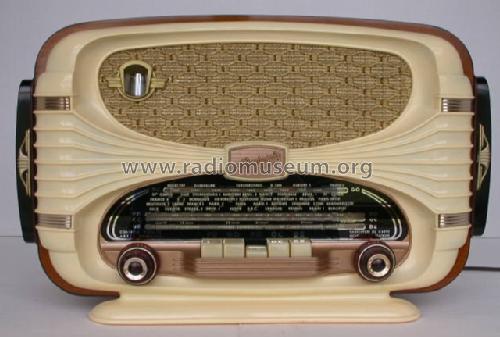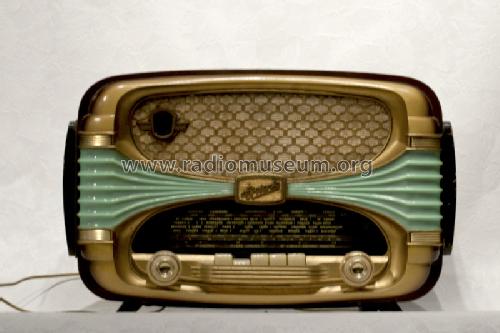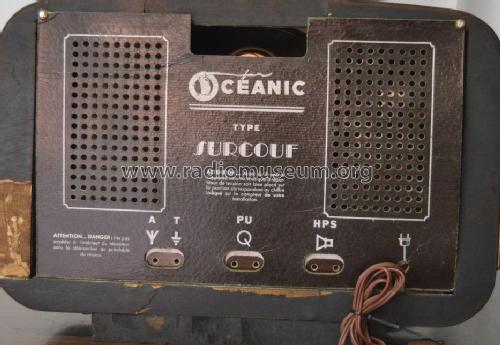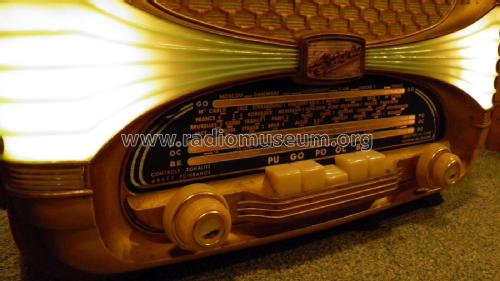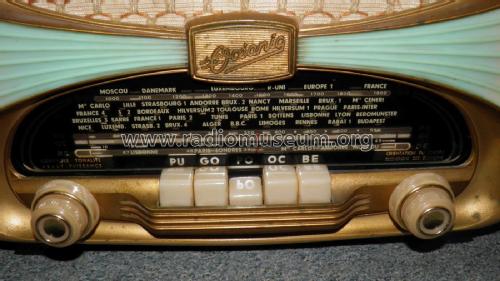Surcouf avec cadre - EM80
Océanic, ITT Océanic; Paris
- Land
- Frankreich / France
- Hersteller / Marke
- Océanic, ITT Océanic; Paris
- Jahr
- 1956 ?
- Kategorie
- Rundfunkempfänger (Radio - oder Tuner nach WW2)
- Radiomuseum.org ID
- 98964
Klicken Sie auf den Schaltplanausschnitt, um diesen kostenlos als Dokument anzufordern.
- Anzahl Röhren
- 6
- Hauptprinzip
- Superhet allgemein
- Wellenbereiche
- Langwelle, Mittelwelle und zwei mal Kurzwelle.
- Betriebsart / Volt
- Wechselstromspeisung / 110-240 Volt
- Lautsprecher
- Dynamischer (permanent) Ovallautsprecher
- Material
- Gerät mit Holzgehäuse
- von Radiomuseum.org
- Modell: Surcouf [avec cadre - EM80] - Océanic, ITT Océanic; Paris
- Form
- Tischgerät, Tasten oder Druckknöpfe.
- Abmessungen (BHT)
- 20 x 12.5 x 10 inch / 508 x 318 x 254 mm
- Bemerkung
- Océanic Surcouf;
Blue and gold colored front panel, unique illuminated,
LW, MW, BE - Bande étalée: ~47 - 50 m,
SW: ~16 - 49 m band,
tone control, built in antenna coil, tuning indicator tube, terminals for phono-in, ext. speaker & antenna/earth. The surcouf has a built in shielded antenna - see the cylinder on the left.
- Autor
- Modellseite von Gottfried Silberhorn angelegt. Siehe bei "Änderungsvorschlag" für weitere Mitarbeit.
- Weitere Modelle
-
Hier finden Sie 159 Modelle, davon 134 mit Bildern und 40 mit Schaltbildern.
Alle gelisteten Radios usw. von Océanic, ITT Océanic; Paris
Sammlungen
Das Modell Surcouf befindet sich in den Sammlungen folgender Mitglieder.
Forumsbeiträge zum Modell: Océanic, ITT Océanic: Surcouf
Threads: 3 | Posts: 6
Radio enthusiasts, how does the vertical loop antenna drum work in the Oceanic Surcouf?
Every AM loop antenna I have ever seen always had a horizontally oriented axis.
The reason for this is that AM transmitters generally transmit with a vertical mast, which polarizes the magnetic field into horizontal magnetic field line circles.
I can't help but wonder if French transmitters used a different polarization, perhaps with some other benefit that I am not aware of, like lower noise, better imunity from fading, or rejection of stations with a conventional polarization.
What bands is the drum for?
Regards,
-Joe
Joe Sousa, 16.Jul.09
Norbert Haselbach, 13.Mar.07
Norbert Haselbach, 13.Mar.07


